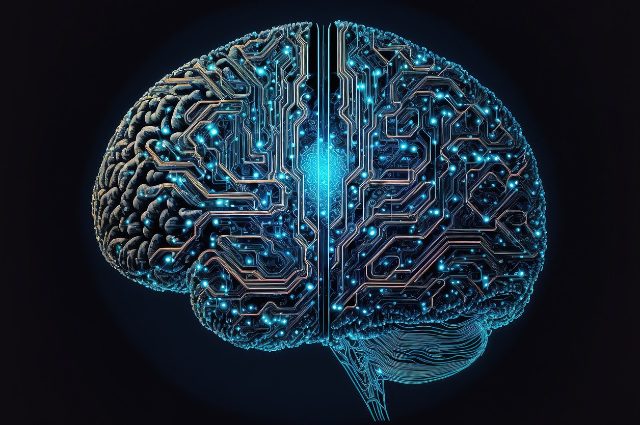
Image by Kohji Asakawa from Pixabay
I. Introduction
Brain-computer interfaces (BCIs) represent the forefront of technological innovation, bridging the gap between the human mind and machines. These interfaces have captivated imaginations with promises of enhancing communication, mobility, and even cognitive abilities. At the forefront of this field is Neuralink, a company founded by Elon Musk, which aims to revolutionize BCIs and unlock the full potential of human augmentation.
Neuralink’s vision goes beyond traditional BCIs, envisioning a future where individuals can seamlessly interact with technology using only their thoughts. This ambitious goal has sparked intense interest and speculation about the implications of such technology for humanity. In this article, we delve into the potential ramifications of Neuralink’s BCI on human augmentation, exploring both the possibilities and the ethical considerations.
II. Understanding Brain-Computer Interfaces
Brain-computer interfaces (BCIs) are devices that enable direct communication between the brain and an external device, bypassing the need for traditional interfaces like keyboards or touchscreens. The concept of BCIs dates back to the 1970s, with early experiments involving invasive electrodes placed directly on the brain’s surface.
BCIs come in various forms, including invasive, non-invasive, and hybrid approaches. Invasive BCIs involve surgically implanting electrodes into the brain tissue, offering high precision but carrying significant risks. Non-invasive BCIs, on the other hand, use external sensors to detect brain activity, offering greater accessibility but lower resolution. Hybrid BCIs combine elements of both approaches to balance efficacy and safety.
Currently, BCIs find applications in diverse fields such as healthcare, gaming, and assistive technology. From controlling prosthetic limbs to aiding in neurorehabilitation, BCIs hold promise for improving the quality of life for individuals with disabilities. However, challenges such as limited bandwidth and signal degradation hinder their widespread adoption and effectiveness.
III. The Emergence of Neuralink
In the ever-evolving landscape of technological innovation, few projects have sparked as much intrigue and excitement as Neuralink, a venture spearheaded by visionary entrepreneur Elon Musk. Founded in 2016, Neuralink aims to revolutionize the field of neuroscience by developing advanced brain-computer interface (BCI) technologies.
At the heart of Neuralink’s mission is Musk’s unwavering commitment to advancing human capabilities through seamless integration with technology. With a background in disruptive ventures such as SpaceX and Tesla, Musk brings his trademark blend of ambition and innovation to the realm of neurotechnology.
Neuralink’s primary goal is to bridge the gap between the human brain and artificial intelligence, unlocking new possibilities for human augmentation and medical intervention. The company envisions a future where individuals can seamlessly interact with computers and digital devices using only their thoughts.
Central to Neuralink’s breakthroughs is its revolutionary Neuralink chip, a marvel of engineering that promises to redefine the boundaries of human-machine interaction. The chip, implanted directly into the brain, utilizes thousands of ultra-thin electrodes to record and stimulate neural activity with unprecedented precision.
With its cutting-edge technology, the Neuralink chip holds the potential to revolutionize various aspects of human augmentation and medical intervention.
IV. Implications of Neuralink for Human Augmentation
The advent of Neuralink heralds a new era in medical science, offering promising avenues for restoring movement and sensory functions to individuals with neurological disorders. By bypassing damaged neural pathways, the Neuralink chip holds the potential to restore mobility and sensation to those affected by conditions such as paralysis or amputation.
Furthermore, Neuralink’s technology opens doors to enhancing cognitive abilities, with potential applications ranging from memory enhancement to accelerated learning. By interfacing directly with the brain’s neural networks, the Neuralink chip could facilitate the augmentation of human cognition, enabling individuals to acquire knowledge and skills at an unprecedented pace.
However, the rapid advancement of Neuralink’s technology also raises profound ethical considerations. Questions surrounding privacy, consent, and autonomy loom large, as the integration of invasive brain-computer interfaces challenges traditional notions of personal sovereignty and data privacy.
Moreover, the societal impact of Neuralink extends beyond the realm of individual augmentation, with far-reaching implications for economic, social, and cultural systems. As BCIs become increasingly prevalent, they have the potential to reshape industries, redefine labor markets, and fundamentally alter the way we interact with technology and each other.
Neuralink represents a groundbreaking leap forward in the field of brain-computer interfaces, with profound implications for human augmentation and societal evolution. As we embark on this journey into the future of neurotechnology, it is imperative that we navigate the complex ethical and societal implications with foresight and caution, ensuring that these transformative technologies serve the collective good of humanity.
V. Potential Future Scenarios
Optimistic outlook: Enthusiasts envision a future where BCIs enable seamless communication between humans and machines, empowering individuals with superhuman cognitive abilities and enhancing quality of life.
Pessimistic view: Critics raise valid concerns about the potential for BCIs to erode personal privacy and autonomy, raising ethical dilemmas surrounding data security and individual agency.
Realistic projections: A nuanced evaluation acknowledges both the transformative potential of BCIs and the complex ethical and societal implications they pose, emphasizing the importance of responsible development and governance.
V. Conclusion
The emergence of Neuralink’s BCI technology presents a pivotal moment in the trajectory of human augmentation. While the promise of enhanced cognitive abilities is tantalizing, it is imperative to confront the ethical and societal challenges inherent in this technology. As we navigate this uncharted territory, a call to action for responsible development and ethical use of BCIs is paramount. The future of human augmentation hangs in the balance, and Neuralink's role in shaping it underscores the need for thoughtful consideration and proactive engagement in steering this technological evolution.
